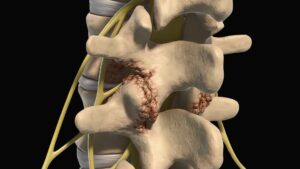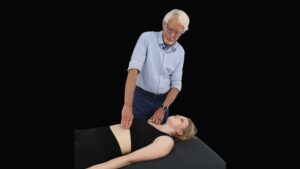Greater Trochanteric Pain Syndrome: A Massage Therapist’s Guide to Hip Pain Relief
The femoroacetabular joint — better known as the hip joint — is one of the largest, strongest, and most mobile joints in the body. This ball-and-socket joint allows a wide range of movement while absorbing tremendous forces.
When walking, the hips provide both power and stability. When jumping, they withstand high-impact loads. Despite their resilience, hips and surrounding tissues are prone to wear and tear, overuse injuries, and age-related changes. When this happens, the brain often responds with protective muscle guarding, leading to stiffness and pain.
Clients with hip pain frequently seek massage therapy as part of their recovery. Knowing the causes of lateral hip pain and how to assess it can help you choose the right manual therapy techniques, educate clients, and know when to refer to another provider.
From “Bursitis” to Greater Trochanteric Pain Syndrome
For decades, lateral hip pain was often called trochanteric bursitis, attributed to inflammation of the bursa sacs covering the greater trochanter.
Today, many cases once labeled bursitis are recognized as greater trochanteric pain syndrome (GTPS) — a broader condition that may involve:
- Gluteus medius or minimus tendinopathy (wear and tear of the tendons beneath the bursa)
- Iliotibial (IT) band irritation over the greater trochanter
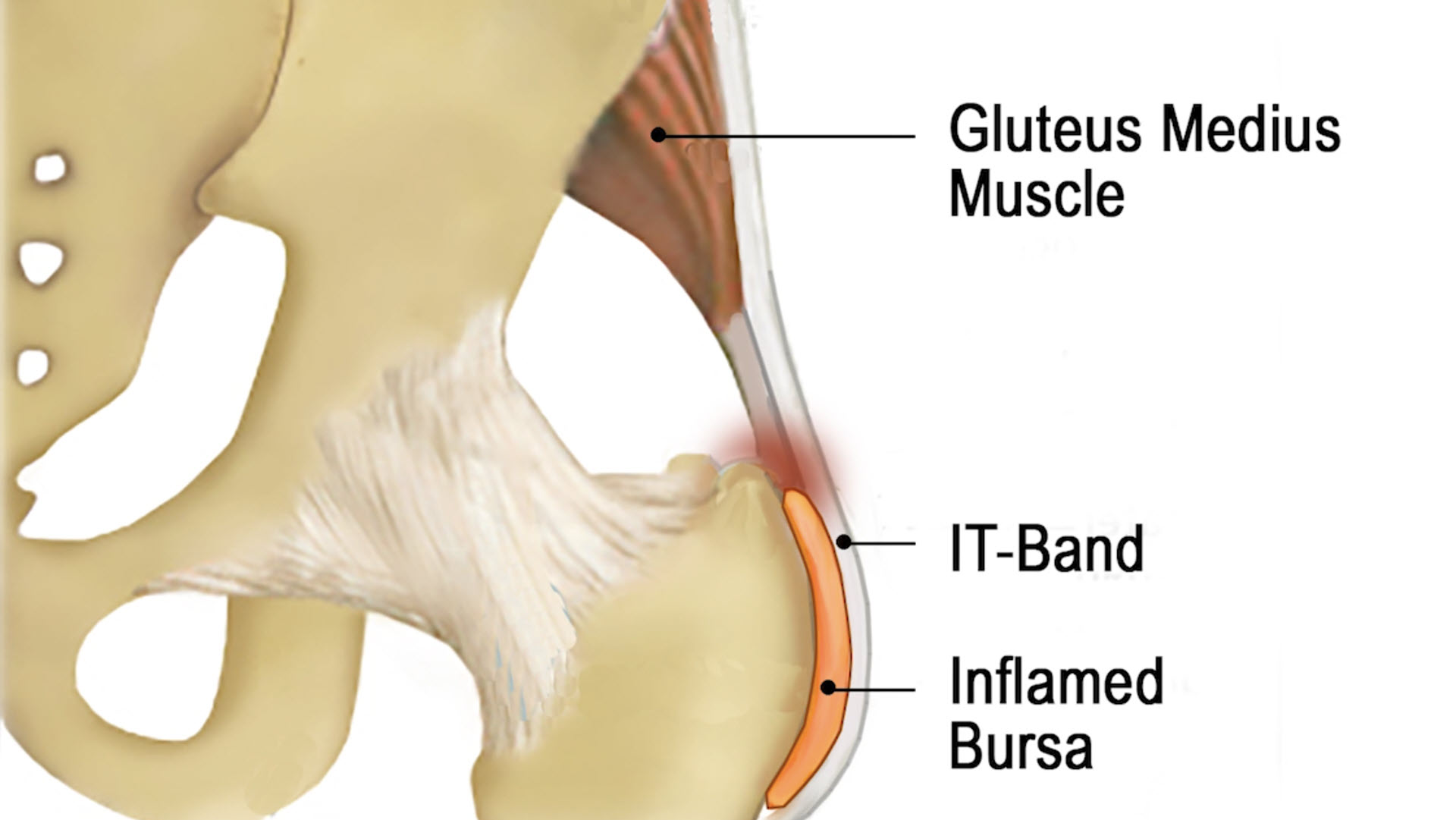
Common Causes of Greater Trochanteric Pain Syndrome
GTPS can develop from:
- Direct trauma to the lateral hip
- Prolonged single-leg standing
- Hip instability from aging
- Repetitive overuse from sports or daily activities
- IT band friction over the bursa
Recognizing the Symptoms
Clients usually present with dull lateral hip pain sometimes radiating into the thigh. It’s not uncommon for clients to report that their pain worsens at night and when rising from a chair after having been seated for an extended period of time. While massage therapists do not diagnose, orthopedic assessments can help guide treatment. Common tests that reproduce symptoms include:
- Palpation over the greater trochanter
- Single-leg stance for 30 seconds
- Resisted hip abduction
The hip de-rotation test (Image 2) is especially useful:
- With the client lying on their back, flex the hip and knee to 90–90.
- Abduct and internally rotate the femur to a comfortable limit.
- Ask the client to push their foot outward against your hand.
- Lateral hip pain during this movement suggests possible GTPS.
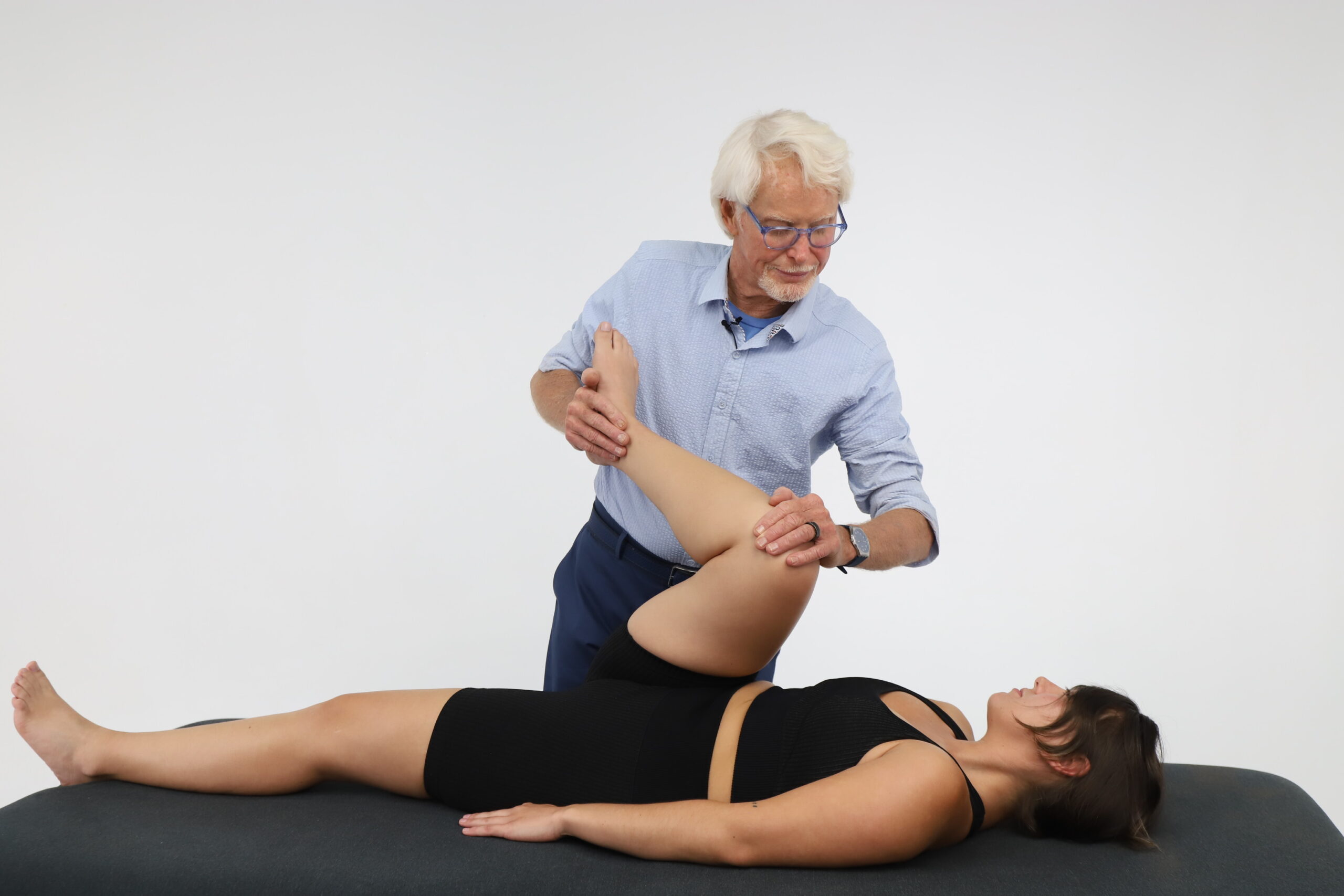
Manual Therapy Goals for GTPS
If the assessments point to GTPS, the treatment goals are to increase blood flow and hydration to the area while restoring elasticity to the tissues that may be compressing the bursa against the greater trochanter. Ultimately, we want to restore pain-free range of motion for the client.
Massage and manual therapy techniques may include:
- Graded exposure stretching to progressively restore mobility (Image 3)
- Sustained, slow elbow pressure to the tensor fascia lata while the client performs pelvic tilts (to ease IT band tension)
- Soft tissue work for the gluteals, hamstrings, quadriceps, and piriformis

Home Care and Strengthening Recommendations
To help maintain progress, encourage clients to:
- Strengthen hip abductors, external rotators, and extensors
- Maintain mobility with gentle daily stretches
- Address gait patterns that overload the lateral hip
Reassurance and Recovery Timeline
In chronic GTPS cases, reassure clients that the pain is often not a sign of ongoing tissue damage. Many cases improve naturally over time, especially when combined with skilled manual therapy and home exercises.
By working as a team with the client’s active participation, you can restore movement, reduce discomfort, and build trust in the body’s ability to heal.
References
1. Bunker TD, Esler CN, Leach WJ. Rotator-cuff tear of the hip. J Bone Joint Surgery, 1997.
On sale this week only!
Save 25% off the Shoulder Arm and Hand course!
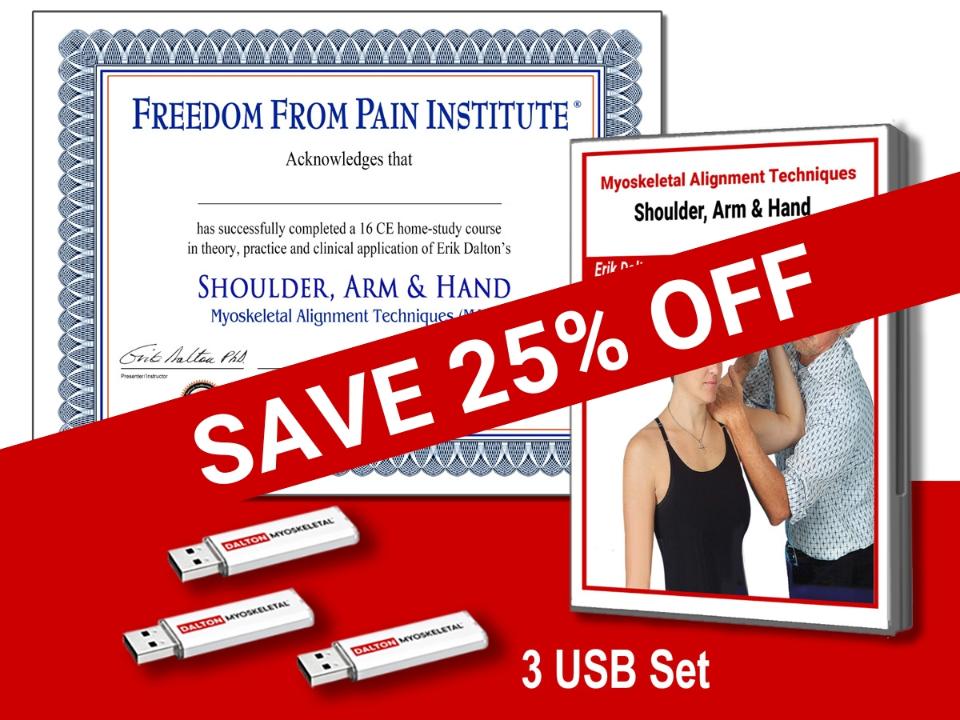
NEW! Enhanced video USB format
Discover 65 techniques for addressing complicated pain problems in the shoulder, arm, and hand. Save 25% this week only. Offer expires Monday, November 3rd! Click the button below for more information and to purchase the course for CE hours and a certificate of completion to display in your office.
BONUS: Order the home study version and get access to the eCourse for free!

